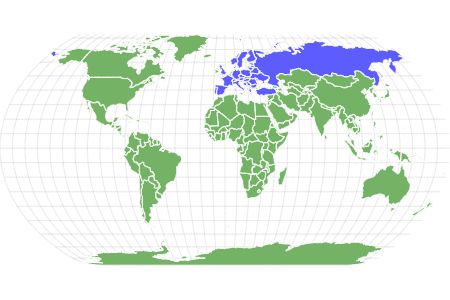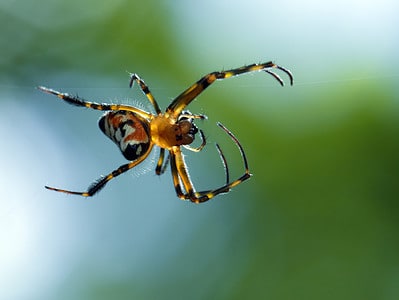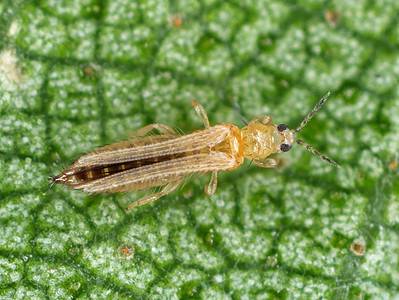Old House Borer
Hylotrupes bajulus
Depending on the habitat and climate, these beetles can live between 2 to 10 years, often staying in their larval stage for several years, making them extremely dangerous to wooden structures.
Advertisement
Old House Borer Scientific Classification
- Kingdom
- Animalia
- Phylum
- Arthropoda
- Class
- Insecta
- Order
- Coleoptera
- Family
- Cerambycidae
- Genus
- Hylotrupes
- Scientific Name
- Hylotrupes bajulus
Read our Complete Guide to Classification of Animals.
Old House Borer Conservation Status
Old House Borer Facts
- Name Of Young
- Larvae
- Group Behavior
- Infestation
- Fun Fact
- Depending on the habitat and climate, these beetles can live between 2 to 10 years, often staying in their larval stage for several years, making them extremely dangerous to wooden structures.
- Other Name(s)
- Longhorn beetle, European house borer, and Italian beetle
- Habitat
- Softwoods like sapwood
- Diet
- Omnivore
- Lifestyle
- Nocturnal
- Favorite Food
- Sapwood
- Common Name
- Old house borer
- Number Of Species
- -1
- Location
- Europe, Africa, North American, South America, Asia, Australia
- Average Clutch Size
- 199
View all of the Old House Borer images!
These beetles are known as pests because of their harmful ability to destroy wood. Older house borers are second only to termites in terms of the damage they cause. However, despite its name, the old house borer prefers newer wood. This is because fresher wood has a higher resin content.
These beetles were first identified in 1758 by Carl Linnaeus, a famous Swedish botanist. They are the only member of their genus.
Woodboring beetles are split into two groups; the old house borer mainly feeds on softwood timber like pine. The second group is powderpost beetles, and they prefer bamboo and hardwoods. If these beetles invade your home, they can cause severe structural damage if left unchecked for an extended amount of time.
Old House Borer Species, Types, and Scientific Name
Old house borers are woodboring beetles with many common names, such as longhorn beetle and European house borer. In addition, South Africans call this wood-destroying specimen the Italian beetle because they arrived in packing cases sent from Italy.
Their scientific name is Hylotrupes bajulus, and they belong to the order Coleoptera. There are over 250,000 species in Coleoptera, making it the largest order in the class Insecta. Because the order is so large, there is a wide diversity regarding biology, size, behavior, and characteristics.
However, the members of this order do have a few similar characteristics, like two sets of wings. They have a pair of membranous hind wings and a pair of elytra, which are tough front wings.
These beetles are very adaptable and can thrive in nearly every type of habitat, including aquatic systems and deserts.
Old house borers are members of the Cerambycidae family, which are long-horned beetles with elongated bodies and compounded eyes. Their bodies are separated into five segmented tarsi. However, the fourth segment is tiny and well hidden.
Many members of this family are nocturnal; however, they are often spotted feeding on flowers. Their larvae are typically legless, white, and woodboring.
Appearance: How To Identify Old House Borer
Adult old house borers are generally 1 inch long and have a dark brown coloring. They have long antennae, usually a third of their body length. Just behind their heads, they have two shiny black bumps and dull gray patches on their lower back.
However, adult beetles are not the problem. They are hardly ever found in wood. If there is a sighting, it’s usually near a light source or window. The larvae are the ones doing all the harm, and they remain hidden in the wood while they develop.
If they are removed from the wood, they can be identified by the three minuscule eyespots on both sides of the head. If only one eyespot is on either side of their heads, it is a less destructive species. However, seeing these features requires a magnifying glass or microscope.
Habitat: Where to Find Old House Borer
Old house borers originated in Europe but soon spread to most continents through trade, and now occur in:
They make their homes in wood, as their name depicts. However, it’s not old wood they are after; they prefer younger wood rich in protein, like sapwood. So, typically large infestations are mainly in structures 10 years old or younger.
Their habitat of preference is softwoods like:
- Pine
- Fir
- Spruce
And they will avoid woods like maple, ash, oak, or poplar.
Interestingly, the old house borers in North America only inhabit lumber and buildings; they will not destroy trees, firewood, or stumps. Instead, they mainly enter buildings by infesting the lumber on a construction site, typically where the wood was stored, processed, or milled.
The females will lay around 200 eggs in joints, crevices, and cracks in the wood. Within a few weeks, the eggs begin to hatch, and the larvae start to feed by boring into the wood. They have plenty of time to remain inconspicuous as they grow slowly, progressively causing more damage as they develop.
Diet: What Do Old House Borer Eat?
The best diet for old house borer larvae is s young sapwood. However, the older the tree, the fewer nutrients it has, and the larvae will have to eat more to live.
Life Cycle of Old House Borer
Larvae hatch after the adults lay eggs on exposed wood surfaces. As soon as they hatch, they start to feed on the wood, creating little tunnels. They are white in color and roughly 1.4 inches long when fully mature.
Depending on the habitat and climate, these beetles can live between 2 to 10 years, often staying in their larval stage for several years, making them extremely dangerous to wooden structures.
Once the larvae are ready to pupate, they start to make their way to the surface of the wood. And finally, they will chew themselves out to find a mate.
Signs of an Active Infestation
Once the larvae hatch and start to feed on the wood, they create detrimental tunnels. As they move further into the tunnels, they leave behind frass (excrement and wood fragments), which generally spill from the exit hole and fall to the floor. This will be the first sign of infestation.
You will know if the infestation is active if this fine dust appears a few weeks after you initially cleaned it up.
Another indication would be the rasping or clicking noises the larvae make while feeding on the wood. These sounds can usually be heard in late spring or early summer when there is lots of moisture in the air. Having a stethoscope around will come in handy if this is the case.
Lastly, the adults will make ragged exit holes when chewing their way out of the wood. The hole is generally oval and about a fourth of an inch wide.
Prevention: How to Get Rid of Old House Borer
It is vital that you inspect any timber and wood structures in your home for holes often. However, treated and air-dried wood is less susceptible to infestations. This includes firewood that needs to be debarked, split, and stored away from the home.
Larvae thrive on humidity, so by installing these items in your home, you can prevent an infestation:
- Ventilation
- Dehumidifiers
- Drainage systems
Prevent the adults from laying eggs in exposed areas by applying shellac, paint, and wood varnish. In addition, you can prevent infestation of untreated wood by applying borax-based products.
Other Woodboring Beetles
Old house borers are not the only wood-destroying beetles; other species include:
Bark Beetles
Bark beetles are black in color and obtained their name because they are known for damaging and destroying trees in forests throughout North America.
But, wood is not the only food source in their diet; they also eat herbaceous plants, fruits, and seeds. They belong to the family Scolytinae, which contains around 247 genera and over 6000 species.
Weevils
Weevils are easily distinguishable by their elongated snouts. There are around 97,000 species worldwide, divided into multiple families. Some species include:
- Wheat weevils (Sitophilus granarius)
- Rice weevils (Sitophilus oryzae)
- Boll weevils (Anthonomus grandis)
Out of these three species, the rice weevil is the biggest pest, causing the most destruction.
Flat Metallic Borers
There are 15 500 species of flat metallic borers in 775 genera. They are very popular amongst insect collectors because of their large size and brightly colored bodies. In addition, their shells are often used to make beetle wing jewelry in countries like Thailand, India, and Japan.
They tend to thrive in deadwood, and their larvae will develop through several stages while inside the wood.
Up Next
View all 66 animals that start with OOld House Borer FAQs (Frequently Asked Questions)
What kills wood borer?
The best way to get rid of wood borers is by fumigating the property.
How long does a wood borer live?
Depending on the habitat and climate, these beetles can live between 2 to 10 years, often staying in their larval stage for several years, making them extremely dangerous to wooden structures.
How do I know if borers are still active?
Once the larvae hatch and start to feed on the wood, they create detrimental tunnels. As they move further into the tunnels, they leave behind frass (excrement and wood fragments), which generally spill from the exit hole and fall to the floor. This will be the first sign of infestation. You will know if the infestation is active if this fine dust appears a few weeks after you initially cleaned it up.
Thank you for reading! Have some feedback for us? Contact the AZ Animals editorial team.
Sources
- Orkin Canada, Available here: https://www.orkincanada.ca/pests/beetles/old-house-borer-beetles/
- Aiken Pest, Available here: https://www.aikenpest.com/old-house-borers
- Beetle Infestations, Available here: https://beetleidentifications.com/old-house-borer-beetle/
- Colonial Pest, Available here: https://www.colonialpest.com/2016/05/13/serious-old-house-borer-infestation-home/
- Wikipedia, Available here: https://en.wikipedia.org/wiki/Hylotrupes
- IUCN Redlist, Available here: https://www.iucnredlist.org/species/157532/5089899#geographic-range

















